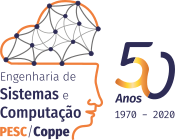Paralelização da Reconstrução de Geometrias Moleculares
Autores
|
6797 |
3040,131,1993
|
|
|
6798 |
3040,131,1993
|
|
|
6799 |
3040,131,1993
|
Informações:
Publicações do PESC
Nesta tese apresentamos uma abordagem para paralelizar o Problema Discreto de Geometria de Distâncias Moleculares, DMDGP, por Dataflow, através do particionamento da molécula segundo uma característica intrínseca dela, os vértices de simetria. A ideia consiste em dividir a molécula em partes segundo a distribuição de alguns vértices bem específicos, resolver cada uma das partes em paralelo e depois unir as soluções parciais encontradas através do emprego de matrizes de rotação. Trataremos, também, da paralelização do Problema Discreto de Geometria de Distâncias em Moléculas com Distâncias Intervalares, o iDMDGP, por Dataflow. Porém, ao invés de dividirmos a molécula, particionaremos o espaço de busca. Apresentamos alguns experimentos computacionais realizados e analisamos o comportamento das abordagens propostas em função do número de cores empregados. Os resultados obtidos mostraram-se animadores, foram obtidos ganhos (speedup) na grande maioria dos testes realizados, em alguns destes foram alcançados speedups acima de 12, o que demonstra a efetividade das abordagens empregadas.
In this thesis we present an methodology to parallelize the Discrete Molecular Distance Geometry Problem (DMDGP) using Dataflow. The method consists in partitioning the molecule according to its intrinsic characteristic, the symmetry vertices. The idea is to break the molecule into parts according to the distribution of some very specific vertices, to solve each part in parallel and then to join the partial solutions found by using rotation matrices. We will also deal with the parallelization of Interval Discretizable Molecular Distance Geometry Problem (iDMDGP) using Dataflow. However, instead of breaking the molecule, we will partition the search space. We present some computational experiments performed and analyze the behavior of the proposed approaches as a function of the number of cores employed. The results were encouraging, gains were obtained (speedups) in the vast majority of the tests performed, in some of these reached speedups above 12, which demonstrates the e ectiveness of the approaches employed.




